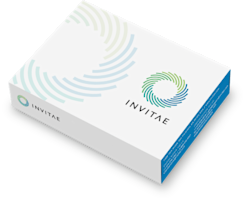
Invitae GM2 Gangliosidosis Panel
Test code: 06180 •
Test description
The Invitae GM2 gangliosidosis Test analyzes 3 genes associated with the GM2-gangliosidoses. Genetic testing of this gene may confirm a diagnosis and help guide treatment and management decisions. Identification of disease-causing variants provide accurate risk assessment and determine carrier status in at-risk relatives.
Additionally, any individual with low β hexosaminidase enzyme activity must undergo variant analysis. The genes encoding the alpha and beta subunits of β hexosaminidase have known pseudodeficiency alleles which can lead to a false positive result on enzyme analysis. Pseudodeficiency alleles do NOT cause clinical disease.
Ordering information
Turnaround time:
10–21 calendar days (14 days on average)New York approved:
YesPreferred specimen:
3mL whole blood in a purple-top EDTA tube (K2EDTA or K3EDTA)Alternate specimens:
Saliva, buccal swab, and gDNA are also accepted.Learn more about specimen requirementsRequest a specimen collection kitClinical description and sensitivity
Clinical description:
The GM2 gangliosidoses are a group of clinically indistinguishable neurodegenerative lysosomal storage diseases due to excessive accumulation of GM2 ganglioside. GM2 gangliosides are components of plasma membranes and are most abundant in neurons. Inability to degrade GM2 gangliosides results in progressive accumulation within the lysosome and eventual neuronal dysfunction.
The enzyme β hexosaminidase has two forms that are involved in GM2 ganglioside degradation: β hexosaminidase A and β hexosaminidase B. β hexosaminidase A is composed of an alpha and a beta subunit, while β hexosaminidase B is composed of two beta subunits. HEXA encodes the alpha subunit and is affected in Tay Sachs disease. HEXB encodes the beta subunit and affects both enzymes β hexosaminidase A and β hexosaminidase B leading to Sandhoff disease. The GM2 activator protein is not an enzyme, but extracts GM2 from the plasma membrane and presents it for degradation; it is encoded by GM2A.
All three GM2 gangliosidoses have similar phenotypes that are clinically indistinguishable. They manifest as a spectrum with severe early infantile presentations to attenuated adult-onset forms. The infantile forms are the most commonly recognized with onset typically between three and six months of age. Affected infants present with progressive muscle weakness, difficulty coordinating muscle movement, decreased attentiveness, and an increased startle response. These symptoms progress to seizures, loss of developmental milestones, blindness and deafness. A characteristic cherry-red spot is seen on ophthalmologic examination. Additionally, organomegaly may also be observed. Death typically occurs by four years of age.
Later onset juvenile and adult cases are less common, present with variable neurologic findings, and less severe disease progression. Symptoms in older individuals may include ataxia, cognitive impairment, and mental illness; cherry-red spots may not be present. Lifespan for older affected individuals may not be affected.
Assay information
Invitae is a College of American Pathologists (CAP)-accredited and Clinical Laboratory Improvement Amendments (CLIA)-certified clinical diagnostic laboratory performing full-gene sequencing and deletion/duplication analysis using next-generation sequencing technology (NGS).
Our sequence analysis covers clinically important regions of each gene, including coding exons and 10 to 20 base pairs of adjacent intronic sequence on either side of the coding exons in the transcript listed below, depending on the specific gene or test. In addition, the analysis covers select non-coding variants. Any variants that fall outside these regions are not analyzed. Any limitations in the analysis of these genes will be listed on the report. Contact client services with any questions.
Based on validation study results, this assay achieves >99% analytical sensitivity and specificity for single nucleotide variants, insertions and deletions <15bp in length, and exon-level deletions and duplications. Invitae's methods also detect insertions and deletions larger than 15bp but smaller than a full exon but sensitivity for these may be marginally reduced. Invitae’s deletion/duplication analysis determines copy number at a single exon resolution at virtually all targeted exons. However, in rare situations, single-exon copy number events may not be analyzed due to inherent sequence properties or isolated reduction in data quality. Certain types of variants, such as structural rearrangements (e.g. inversions, gene conversion events, translocations, etc.) or variants embedded in sequence with complex architecture (e.g. short tandem repeats or segmental duplications), may not be detected. Additionally, it may not be possible to fully resolve certain details about variants, such as mosaicism, phasing, or mapping ambiguity. Unless explicitly guaranteed, sequence changes in the promoter, non-coding exons, and other non-coding regions are not covered by this assay. Please consult the test definition on our website for details regarding regions or types of variants that are covered or excluded for this test. This report reflects the analysis of an extracted genomic DNA sample. In very rare cases, (circulating hematolymphoid neoplasm, bone marrow transplant, recent blood transfusion) the analyzed DNA may not represent the patient's constitutional genome.
You can customize this test by clicking genes to remove them.
Primary panel
Question about billing?
Find answers